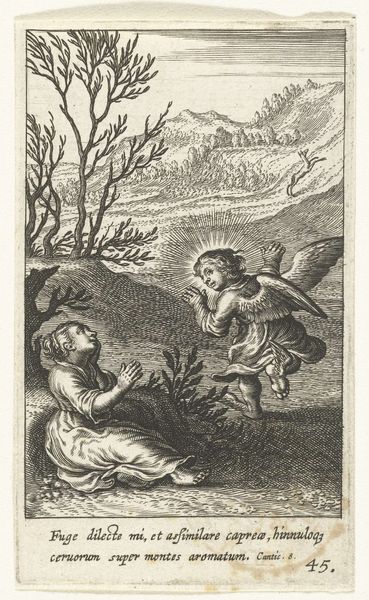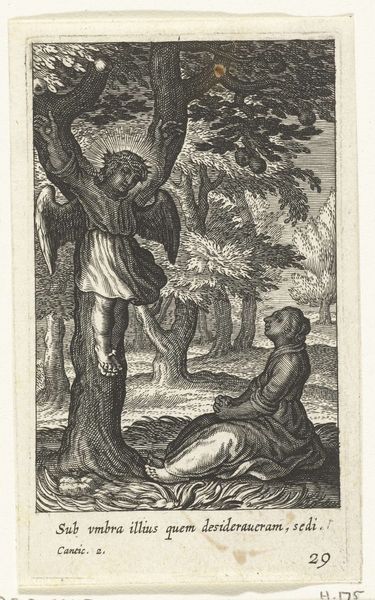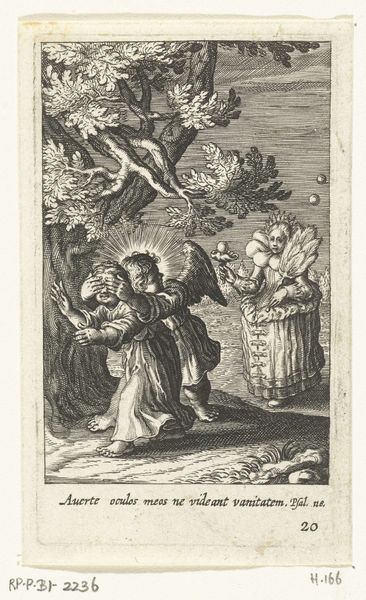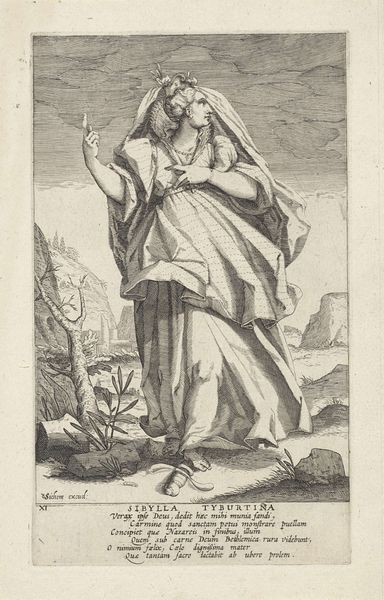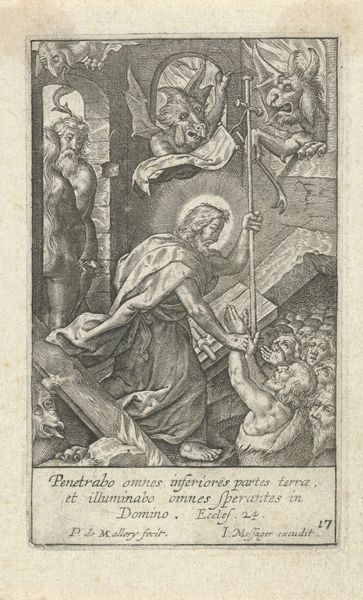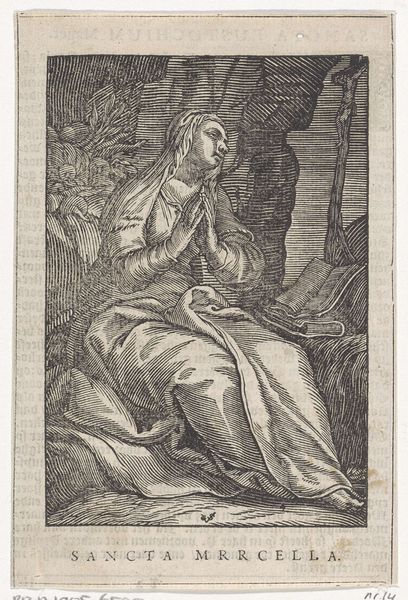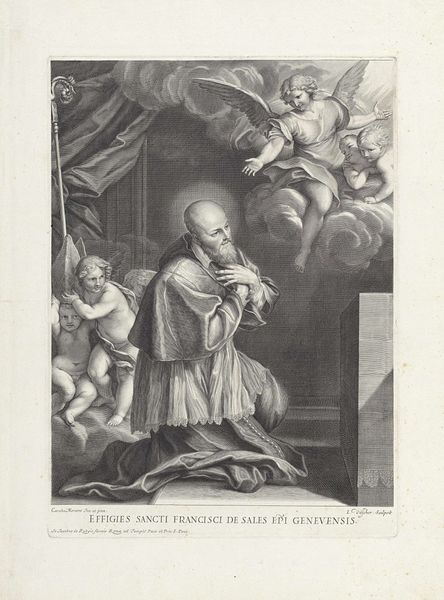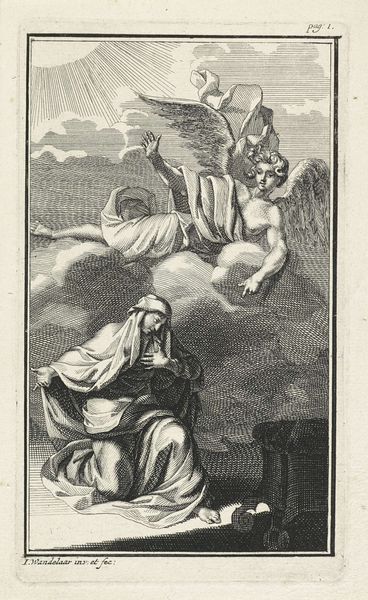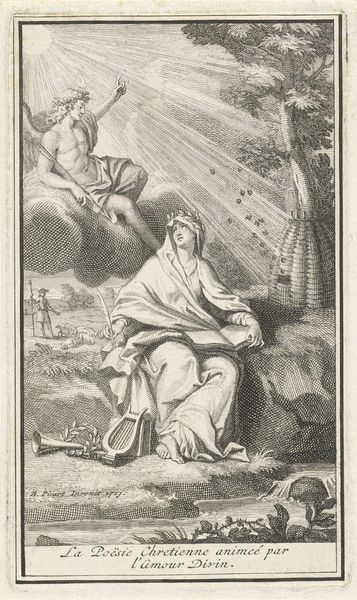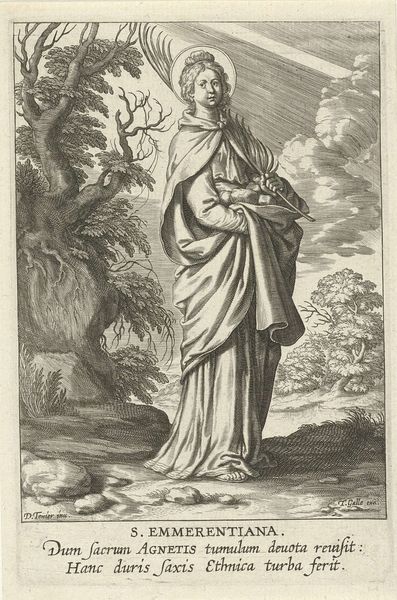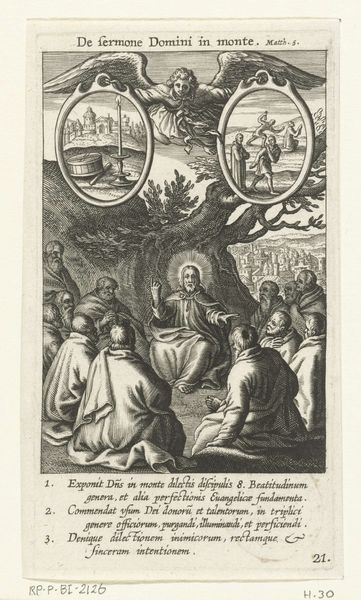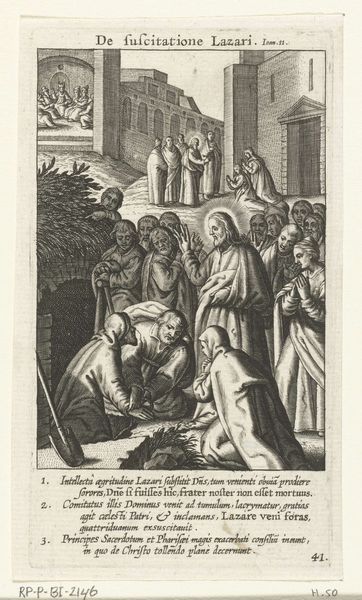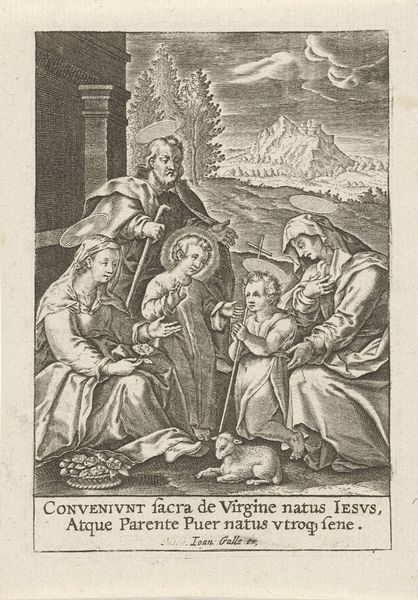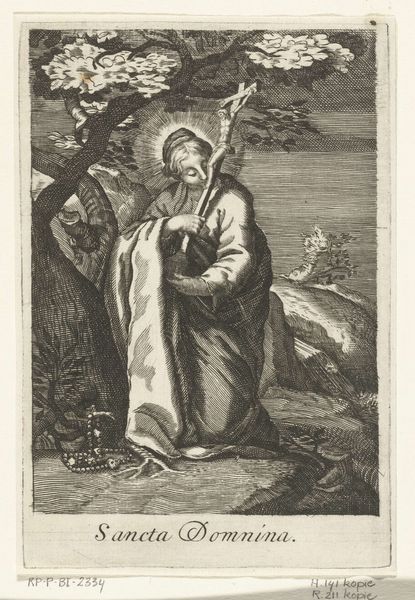
print, engraving
#
baroque
# print
#
old engraving style
#
figuration
#
line
#
history-painting
#
engraving
Dimensions: height 133 mm, width 75 mm
Copyright: Rijks Museum: Open Domain
Curator: Looking at "Christus in de hof van Olijven" (Christ in the Garden of Olives), a print created by Boëtius Adamsz. Bolswert sometime between 1590 and 1622, it immediately strikes me how intensely the composition draws the eye directly to the figure of Christ. The dramatic lighting definitely accentuates this effect. Editor: Yes, there's an almost overwhelming sense of isolation and interiority. Despite the presence of the other figures, they seem entirely separate from Christ's experience. I am curious about how this composition plays into broader cultural anxieties around faith and suffering at the time. Curator: That's an insightful point. Prints like this were widely distributed, serving as potent tools for religious instruction and reinforcement of social order. Bolswert was a prominent figure in printmaking, and this work would have been accessible to a wide audience and likely influenced popular understanding of religious narratives. Editor: Precisely, and it's not just about reinforcing dogma. Notice the angel descending with the chalice. Is this a vision of hope or an acknowledgment of inevitable suffering? The image resonates with feminist interpretations, suggesting that Christ’s acceptance mirrors a complex tension between personal agency and divinely ordained roles within a patriarchal structure. What societal norms were people subtly questioning through the art market at this time? Curator: Absolutely. The use of line engraving enhances the drama and the detail. There's a raw, almost unsettling quality to the rendering of emotional anguish that makes the scene incredibly poignant. Consider the political undercurrent of depicting subservient poses like the kneeling one as one tied to suffering. Editor: I think there’s more at play here. Considering this piece was reproduced as a widely available print and its use of symbolism within religious historical context helps the viewer tap into those collective beliefs and project onto them questions of personal freedom, spirituality and societal expectations. It is through a closer consideration that we can really begin to dissect how and what art can do. Curator: I concur; viewing this print in our contemporary environment allows us a window into how faith, struggle, and sacrifice resonated historically, while it also opens discussions on agency and devotion across diverse perspectives. Editor: Exactly, reflecting on historical portrayals within ever shifting cultural landscapes creates space for critical consideration of societal and political systems.
Comments
No comments
Be the first to comment and join the conversation on the ultimate creative platform.
